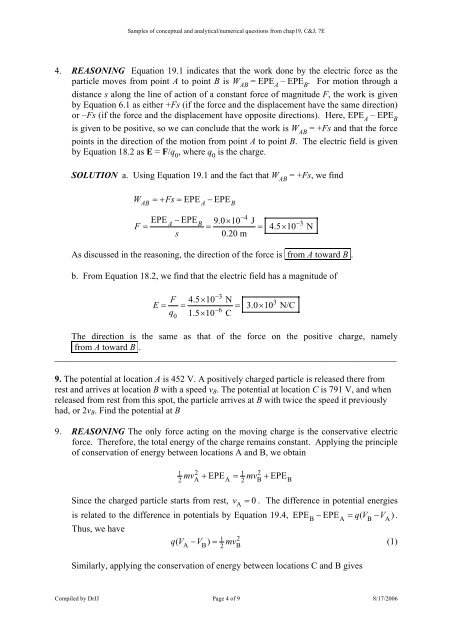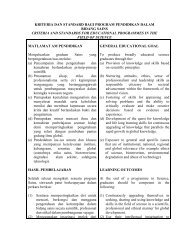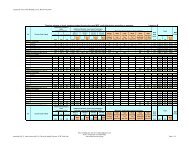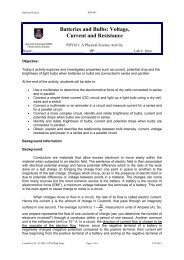Basic Physics II Evidences - DrJJ - UiTM
Basic Physics II Evidences - DrJJ - UiTM
Basic Physics II Evidences - DrJJ - UiTM
You also want an ePaper? Increase the reach of your titles
YUMPU automatically turns print PDFs into web optimized ePapers that Google loves.
Samples of conceptual and analytical/numerical questions from chap19, C&J, 7E4. REASONING Equation 19.1 indicates that the work done by the electric force as theparticle moves from point A to point B is W AB= EPE A– EPE B. For motion through adistance s along the line of action of a constant force of magnitude F, the work is givenby Equation 6.1 as either +Fs (if the force and the displacement have the same direction)or –Fs (if the force and the displacement have opposite directions). Here, EPE A– EPE Bis given to be positive, so we can conclude that the work is W AB= +Fs and that the forcepoints in the direction of the motion from point A to point B. The electric field is givenby Equation 18.2 as E = F/q 0, where q 0is the charge.SOLUTION a. Using Equation 19.1 and the fact that W AB= +Fs, we findW=+ Fs = EPE −EPEAB A B−4EPEA− EPEB9.0×10 J−3F = = = 4.5×10 Ns 0.20 mAs discussed in the reasoning, the direction of the force is from A toward B .b. From Equation 18.2, we find that the electric field has a magnitude of−3F 4.5×10 N3E = = = 3.0×10 N/Cq−61.5×10 C0The direction is the same as that of the force on the positive charge, namelyfrom A toward B .___________________________________________________________________________9. The potential at location A is 452 V. A positively charged particle is released there fromrest and arrives at location B with a speed v B . The potential at location C is 791 V, and whenreleased from rest from this spot, the particle arrives at B with twice the speed it previouslyhad, or 2v B . Find the potential at B9. REASONING The only force acting on the moving charge is the conservative electricforce. Therefore, the total energy of the charge remains constant. Applying the principleof conservation of energy between locations A and B, we obtain1 2 1 2mvA + EPE2 A= mv2 B+ EPEBSince the charged particle starts from rest, v A= 0 . The difference in potential energiesis related to the difference in potentials by Equation 19.4, EPEB− EPEA= qV (B− VA).Thus, we have1 2qV ( − V ) = mv(1)A B 2 BSimilarly, applying the conservation of energy between locations C and B givesCompiled by <strong>DrJJ</strong> Page 4 of 9 8/17/2006
















